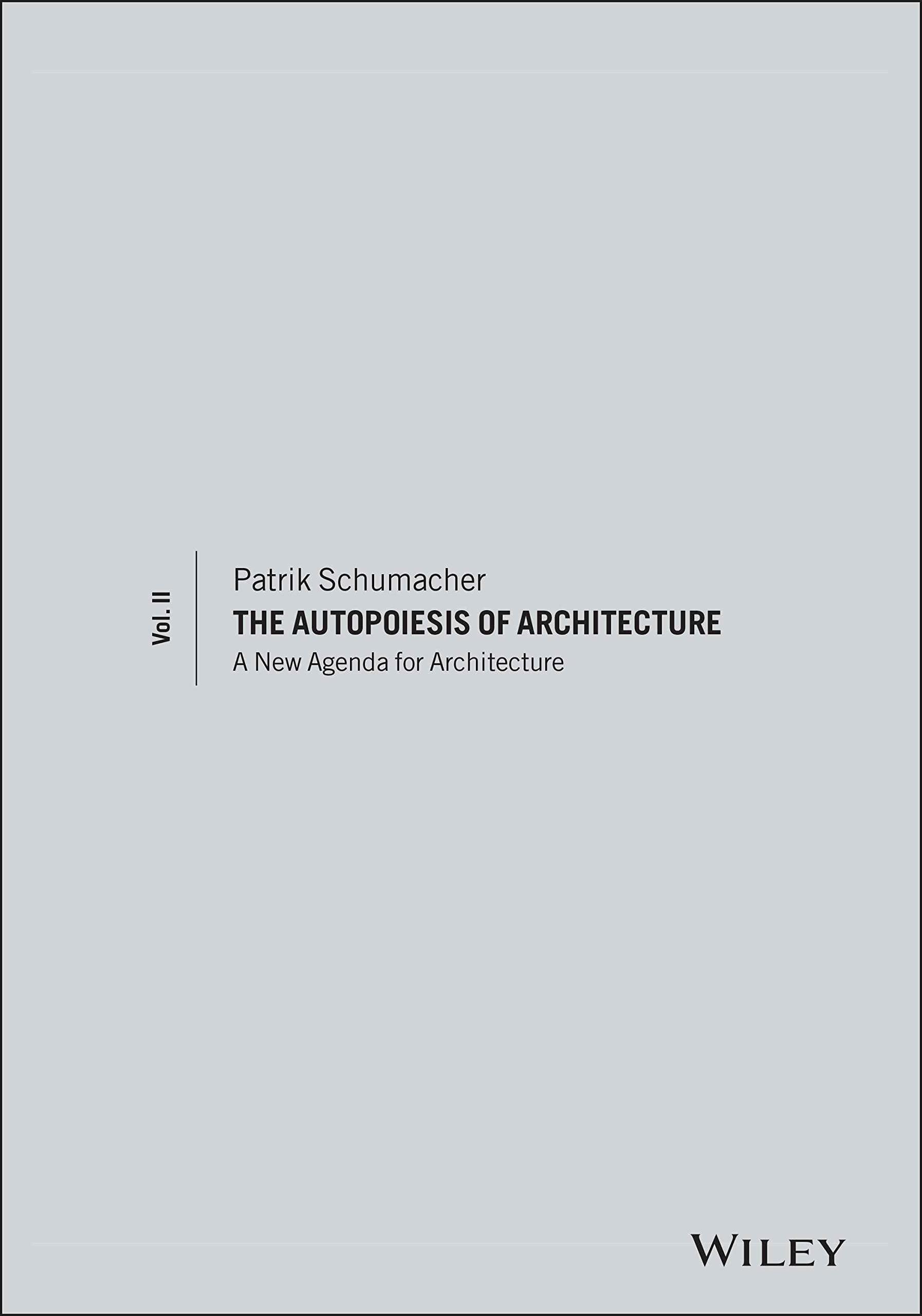The Autopoiesis of Architecture, Volume II: A New


encountering issues with the button? click the link below for the full book page:
https://tq.filegood.club/esu/0470666161/The-Autopoiesis-of-ArchitectureVolume-II-A-New-Agenda-for-Architecture
Ebook The Autopoiesis of Architecture, Volume II: A New Agenda for Architecture
Download The Autopoiesis of Architecture, Volume II: A New Agenda for Architecture
GET Book The Autopoiesis of Architecture, Volume II: A New Agenda for Architecture
for a great selection of books, make sure to visit my account and explore the diffrent genres and authors on offer.
This is the second part of a major theoretical work by Patrik Schumacher, which outlines how the discipline of architecture should be understood as its own distinct system of communication. Autopoeisis comes from the Greek and means literally self-production it was first adopted in biology in the 1970s to describe the essential characteristics of life as a circular self-organizing system and has since been transposed into a theory of social systems. This new approach offers architecture an arsenal of general comparative concepts. It allows architecture to be understood as a distinct discipline, which can be analyzed in elaborate detail while at the same time offering insightful comparisons with other subject areas, such as art, science and political discourse. On the basis of such comparisons the book insists on the necessity of disciplinary autonomy and argues for a sharp demarcation of design from both art and engineering. Schumacher accordingly argues controversially that design as a discipline has its own sui generis intelligence 8211 with its own internal logic, reach and limitations.Whereas the first volume provides the theoretical groundwork for Schumacher8217s ideas 8211 focusing on architecture as an autopoeitic system, with its own theory, history, medium and its unique societal function 8211 the second volume addresses the specific, contemporary challenges and tasks that architecture faces. It formulates these tasks, looking specifically at how architecture is seeking to organize and articulate the complexity of post-fordist network society. The volume explicitly addresses how current architecture can upgrade its design methodology in the face of an increasingly demanding task environment, characterized by both complexity and novelty. Architecture8217s specific role within contemporary society is explained and its relationship to politics is clarified. Finally, the new, global style of Parametricism is introduced and theoretically grounded.
